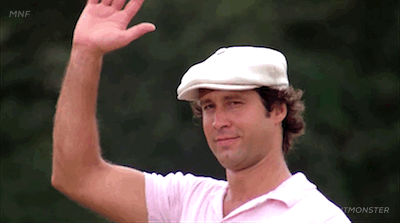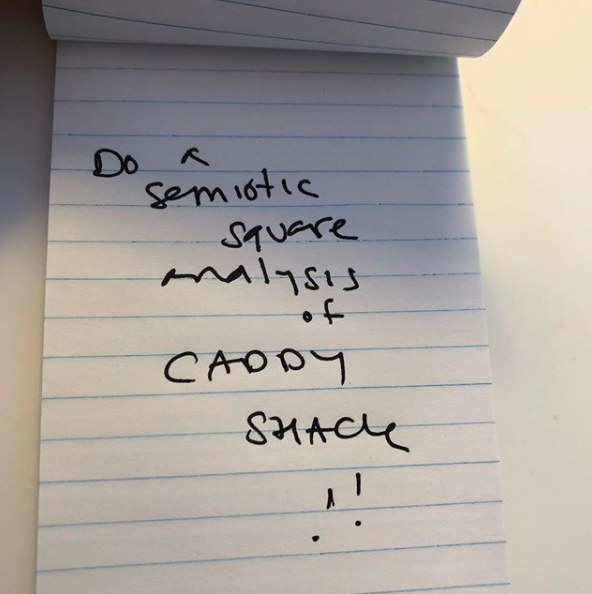Caddyshack Codes

One night this past February, I couldn’t sleep. Slipping into a hypnagogic state, as I am sometimes able to do in such circumstances, I found myself floating through the 1980 golfing comedy Caddyshack. I hadn’t watched Caddyshack in years, yet I could vividly summon up not only its key scenes but lesser, throwaway moments — e.g., “Don’t you have homes?”, “Bye, Chuck,” “That must be the tea.” And just beneath the action I seemed to glimpse the movie’s organizing paradigms and themes.
It’s a perplexing film! Our hero, Danny Noonan (Michael O’Keefe), isn’t particularly compelling; and its villain, Judge Smails (Ted Knight), is a more sympathetic figure than he has any right to be. Like Animal House, Caddyshack was written by Douglas Kenney… yet the caddies aren’t a charismatic crew of beautiful losers like the Delta Tau Chis were; and the movie’s rebellious, antiestablishment narrative is disrupted by the eccentric, ad-libbed antics of Chevy Chase, Bill Murray, and Rodney Dangerfield.

The creators of Caddyshack were disappointed in how the final cut turned out; they considered it deeply flawed, even misbegotten. (New York magazine described it, at the time, as “a perfectly amiable mess.” The Boston Globe was harsher: “It presupposes an audience with the collective intelligence of a lobotomized ape.”) And yet, as my consciousness flitted in and out of the Caddyshack semiosphere that night, I thought I could glimpse in its patched-together script, blocking, and performances a revelatory pattern — an interlocking mandala of paradigms and thematic complexes, brought to life by source codes (signs).
The movie isn’t merely a carnivalesque pantomime about white-collar snobbery and blue-collar resentment; it has something profound to impart to us regarding work versus idleness, and order versus anarchy. It’s an Althusserian work of ideologiekritik… in which Ted Knight gets hit in the nuts with a golf ball. Everything — Dangerfield’s sweatiness, Chase and Murray’s ad libbing, O’Keefe’s crooked teeth — offers an aha! insight.
Snapping into wakefulness, I wrote the following note to myself:

In fits and starts, during spare moments since that February night, I’ve taken notes on what (and how) Caddyshack means. Over the next few weeks, in a series of posts, I’ll let you in on what I’ve come to understand.
We’ll begin with the post Golf Club.
Enjoy!

